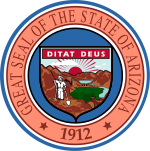
George Wylie Paul Hunt was an American politician and businessman. He was the first governor of Arizona, serving a total of seven terms, along with President of the convention that wrote Arizona's constitution. In addition, Hunt served in both houses of the Arizona Territorial Legislature and was posted as U.S. Minister to Siam by Woodrow Wilson.

Rawghlie Clement Stanford was an American judge and politician who served as the fifth governor of Arizona from 1937 to 1939. He later served on the Arizona Supreme Court from 1943 until 1955, including three years as chief justice.
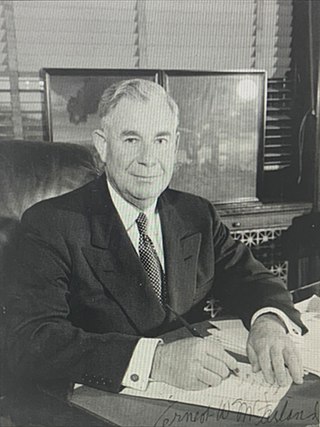
Ernest William McFarland was an American politician, jurist and, with Warren Atherton, one of the "Fathers of the G.I. Bill". He served in all three branches of government, two at the state level, one at the federal level. He was a Democratic U.S. senator from Arizona from 1941 to 1953 before becoming the tenth governor of Arizona from 1955 to 1959. Finally, McFarland sat as chief justice on the Arizona Supreme Court in 1968.

The 1912–13 United States Senate elections were held on various dates in various states. They were the last U.S. Senate elections before the ratification of the Seventeenth Amendment in 1913, establishing direct elections for all Senate seats. Senators had been primarily chosen by state legislatures. Senators were elected over a wide range of time throughout 1912 and 1913, and a seat may have been filled months late or remained vacant due to legislative deadlock. Some states elected their senators directly even before passage of Seventeenth Amendment. Oregon pioneered direct election and experimented with different measures over several years until it succeeded in 1907. Soon after, Nebraska followed suit and laid the foundation for other states to adopt measures reflecting the people's will. By 1912, as many as 29 states elected senators either as nominees of their party's primary or in conjunction with a general election.

Andrew Jackson Bettwy, an Arizona Democrat, served as Mayor of Nogales, Arizona, from 1935 to 1937, was an Arizona delegate at the Democratic National Conventions of 1924 and 1928, and 1928, and was an unsuccessful candidate for governor in the 1930, 1932, 1934, 1936, and 1938 primary elections and in the 1932 general election.

From January 29 to June 4, 1996, voters of the Republican Party chose its nominee for president in the 1996 United States presidential election. Senator Bob Dole of Kansas, the former Senate majority leader, was selected as the nominee through a series of primary elections and caucuses culminating in the 1996 Republican National Convention held from August 12 to 15, 1996, in San Diego, California; Dole resigned from the Senate in June 1996 once he became the presumptive nominee to concentrate on his presidential campaign.

The 1932 United States Senate elections in Arizona took place on November 8, 1932. Incumbent Democratic U.S. Senator Carl Hayden ran for reelection to a second term, again defeating his 1926 challenger former U.S. Senator Ralph H. Cameron in the general election.

The 1964 United States Senate election in Arizona took place on November 3, 1964. Incumbent Republican U.S. Senator Barry Goldwater decided not to run for reelection to a third term, instead running for President of the United States as the Republican Party nominee against Lyndon B. Johnson. Governor of Arizona Paul Fannin ran unopposed in the Republican primary, and defeated Democratic nominee Roy Elson, who was a staff member for U.S. Senator Carl Hayden until Hayden's retirement in 1969.

The 1914 Arizona gubernatorial election took place on November 3, 1914, for the post of the Governor of Arizona. The Supreme Court of Arizona ruled that there would be no statewide elections in 1912, thus extending the terms to sync up with elections on even years. The Democratic nominee was incumbent governor George W. P. Hunt, his Republican opponent was the final Delegate to Congress from Arizona Territory, Ralph H. Cameron. Cameron was disadvantaged by the same reason the previous Republican nominee Wells was: he had opposed statehood with the present Constitution.

The 1916 Arizona gubernatorial election took place on November 7, 1916, for the post of the Governor of Arizona. Due to battles between labor and business, the Hunt administration was facing severe electoral backlash. After facing a fairly strong primary by former Council member George Olney, Hunt prevailed and went on to face the closest election in Arizona gubernatorial history. The initial results of the 1916 election were extremely close, with Campbell winning by only 30 votes.

The 1918 Arizona gubernatorial election took place on November 5, 1918, for the post of the Governor of Arizona. Thomas Campbell, who served a partial term in 1917 and had his election overturned by the Supreme Court of Arizona, returned to contest the Governors office. Incumbent Governor Hunt declined to run again after the stress of the close elections and the year-long court battle. Despite falling to its lowest percentage in years, the sole third party challenger held the difference between the two candidates. The Democratic challenger was state senator Fred T. Colter, a pro-Hunt Democrat.
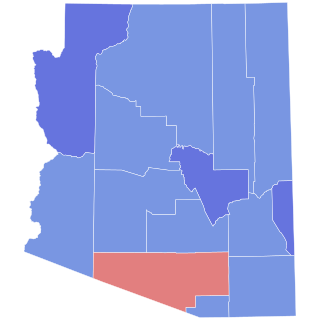
The 1922 Arizona gubernatorial election took place on November 7, 1922. George W. P. Hunt was Arizona's first governor, after retiring in 1919 he served as Ambassador to Siam during the tail end of the Woodrow Wilson administration. After being dismissed by President Warren G. Harding, Hunt returned to Arizona and decided to contest his old seat. Both Hunt and Campbell faced off in 1916, the closest gubernatorial in Arizona history. This election was the highest percentage of votes Hunt ever got in his 7 gubernatorial races.

The 1924 Arizona gubernatorial election took place on November 4, 1924. Despite being a Republican year nationally, President Coolidge's election in Arizona was rather close. He only took Arizona with 40% of the vote against Davis' 35% and La Follette's 23%. The closest Arizona gubernatorial election since 1916, Hunt's lead in votes would continue to decline.

The 1926 Arizona gubernatorial election took place on November 2, 1926. Despite being a Democratic year generally, Hunt barely managed to be re-elected against his Republican opponent Elias Clark. Hunt had been governor for around 11 out of the State of Arizona's 14 years, coupled with his age and with issues regarding the Colorado River Compact, he was running out of steam. Despite that Hunt narrowly prevailed and won.

The 1928 Arizona gubernatorial election took place on November 6, 1928. Despite a fairly poor economy, a 15-point loss by Al Smith for the Arizona electoral votes, and having served for nearly 6 full terms, Hunt only narrowly lost the general election. Other state Democrats like Senator Ashurst and Representative Douglas both won re-election. John C. Phillips became the second Republican to serve as Arizona Governor, and the first to beat Hunt in a general election.
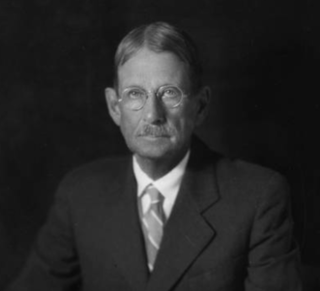
Frank Hubbard Lyman was a justice of the Supreme Court of Arizona from January 1, 1923, to January 5, 1925.

The 1932 Arizona gubernatorial election took place on November 8, 1932. Incumbent Governor George W. P. Hunt ran for the Democratic nomination, but lost in the primary to Benjamin Baker Moeur, whose pre-gubernatorial experience included service as the Secretary of the Board of Education for Arizona State Teacher's College, which would later become Arizona State University.

The 1934 Arizona gubernatorial election took place on November 6, 1934. Incumbent Governor Benjamin Baker Moeur ran for reelection, he was challenged by former governor George W. P. Hunt and future Governor Rawghlie Clement Stanford in the Democratic primary, but he defeated both of them by a comfortable margin.

The 1938 Arizona gubernatorial election took place on November 8, 1938. Incumbent Governor Rawghlie Clement Stanford declined to run for reelection, with pharmacy and cattle ranch owner Robert Taylor Jones winning the Democratic nomination to succeed Stanford.
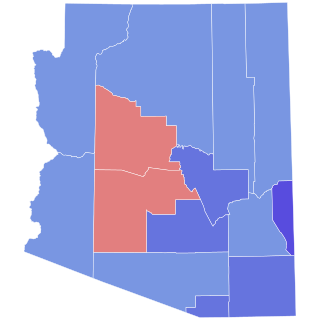
The 1964 Arizona gubernatorial election took place on November 3, 1964. Incumbent Governor Paul Fannin decided not to run for reelection to a fourth term as governor, instead deciding to successfully run for the United States Senate when incumbent U.S. Senator Barry Goldwater decided to run for President of the United States.

